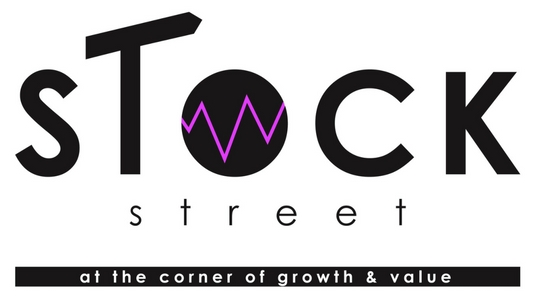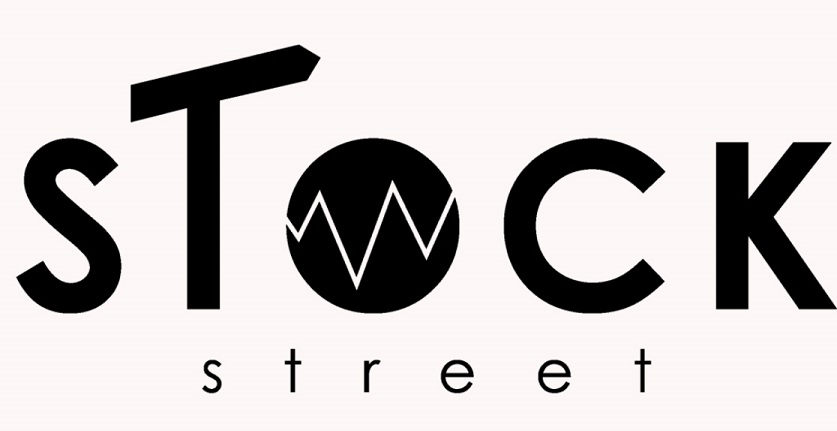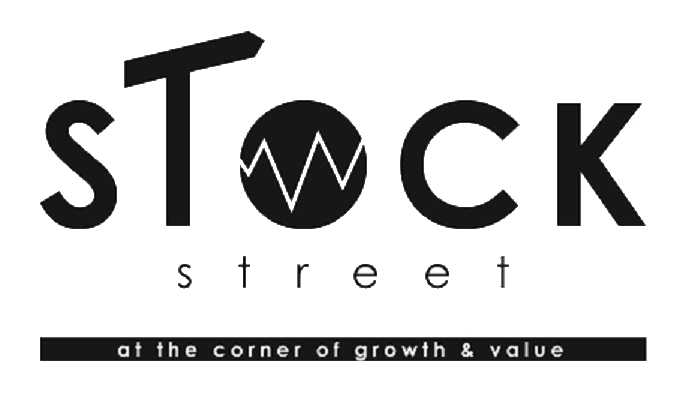Betterment Review
- Fees
- Investment Options
- Account Options
- Tools & Features
- Account Minimum
Good to know
Betterment is a top robo-advisor for those looking for a passive, set-it-and-forget-it, option. It comes with favorable technology, like RetireGuard, advanced tax loss harvesting, and tax coordinated portfolio features.
Anyone looking for control over their investments and individual stocks and securities may not benefit from Betterment's passive style.
Also, I believe Betterment's Socially Responsible Investment (SRI) option is poor and inadequate for someone looking for a true SRI portfolio.
Betterment also offers a promotion for 1 year free when referring friends.
-
INVEST WITH BETTERMENTBetterment is a robo-advisor that launched in 2010.
The company is over eight years old now – you know what that makes it in robo-advisor years?
Ancient.
In robo-advisor years, Betterment has been around for a very long time.
Also, Betterment is an independent robo-advisor.
This means it is not a robo-advisor owned by one of the big brokers, like Charles Schwab, or TD Ameritrade.
Today, Betterment is the largest robo-advisor, clocking in at over $10 billion in assets under management (AUM).
Since it is one of the older robo-advisors, the company has withstood competition from many companies which have risen over the years.
With so many robo-advisors popping up in the United States, how does Betterment stack up?
This extensive Betterment review will shed light on how Betterment competes in today’s market, and help you decide if it is the right robo-advisor for you.
Betterment Review
Betterment Features
BETTERMENT | |
|---|---|
| Rating | 4.5 |
| Management Fee | 0.25% - 0.40% |
| ETF Expense Ratios | |
| Account Minimum | $0 |
| Algorithm Based Portfolio | |
| Investment Options | |
| Account Options | |
| Technology | |
| Lending | NO |
| Socially Responsible Investing | YES BUT INADEQUATE |
| Promotions | Refer a friend get 1 month free. Your friend will get 3 months free. Refer 3 friends get 1 year free. |
| Betterment Phone Support | 855-796-9498 |
| Betterment Email Support | support@betterment.com |
| Betterment Address | 61 W. 23rd Street, 4th Floor New York, NY 10010 |
| INVEST WITH BETTERMENT |
About the fees and features
- Fees – 0.25% = Digital Plan; 0.50% = Premium Plan
- Asset allocation – Investment algorithm based on risk tolerance, age, etc…
- Goal-based investing – Betterment helps you track your investment goals to keep you on track.
- ETF Fees – Yes. Fees are charged on underlying ETFs.
- Betterment Investment options – Investments available through Betterment include:
- Stock ETFs
- Bond ETFs
- Stock mutual funds
- Bond mutual funds
- Real estate investment trusts
- Betterment options – Accounts available including:
- Taxable brokerage account
- Traditional IRA
- Roth IRA
- SEP IRA
- Minimum investment – $0
- Promotional offers – One year free. Referral program.
Positives of Betterment
- Goal-based investing – A big driver of customers to Betterment is perhaps their use of goal-based investing. Betterment will ask you about your investment goals and keep you updated on how you are doing with those goals. This is the most important feature that sets it apart from most other robo-advisors. The goal-based platform can be a powerful tool for those who want it.
- Fees for digital platform – The fee for Betterment’s digital plan is 0.25%. While this fee isn’t impressive per se, it is low enough that it competes with many other robo-advisors. For example, Wealthsimple has a fee of 0.40% – 0.50%. On the other hand, a company like M1 Finance charges no management fee. Betterment is low enough to be considered average, but it is not considered to be the low fee option.
- Account minimum – The account minimum for Betterment is $0. This is a positive feature of the company. It lets you test the platform with any amount of money so you may decide if the company will be for you. This is much better than a company such as, Charles Schwab and TD Ameritrade, which both have a $5,000 minimum.
- Set it and forget it algorithm – Betterment is a great tool for anyone who just wants to set it and forget it. The company uses an algorithm based on risk tolerance questioning and will invest your money based on your answers. You don’t have to do much else.
- Get one year free – Betterment has a promotional offer available. If you refer a friend, you receive a month with no fees and your friend receives no fees for three months. It gets even better if you refer three friends, by referring three friends you will receive a year of Betterment with no fees.
- Access to advisors – The days of a robo-advisor being strictly a robot may be behind us. It seems there is a desire for many investors to have access to a financial advisor for (at least) basic questions. Betterment Digital (the lower based plan) provides access to an advisor through its messaging system. You can ask a licensed financial rep questions and get answers.
- Betterment Premium – If you are in need of financial advice and want access to a Certified Financial Planner (CFP), the Betterment Premium may be for you. For a higher fee, you can have access to speak with CFPs via email, phone, or chat. However, if you do not have any desire to use a CFP, the extra fee for Betterment Premium will likely not be for you.
- RetireGuide – RetireGuide will help you understand if you are on track for retirement. It will tell you if you are saving enough to make it to retirement, when you may be able to retire, etc.
- Linking external accounts – You can link external accounts with Betterment. By synching external accounts, Betterment can better help you with your financial goals.
- Debt and emergency fund – Betterment is respectable in that it suggests its investors should not invest if they have high interest rate debt and that they should first save an emergency fund. These two factors surely provide less money for Betterment to invest, but it is the right thing to do.
- Flexible portfolio – Allows you to make changes to the Betterment investment recommendations. You can change the asset weights. For example, if you want more bonds than stocks, you can change the weighting.
- Satisfaction guarantee –
Negatives of Betterment
- Fee for over 100K – In the past, betterment charged a 0.15% fee for assets over $100,000. Unfortunately, the company raised this 0.15% fee to 0.25% for all assets under management. If you have a large account balance, you will not be provided with any breakpoint to lower your management fee.
- No do-it-yourself options – Betterment is a robo-advisor that leverages a set-it-and-forget-it platform. There are no tools for those who are active investors and are interested in buying individual stocks. If you are looking for a platform that has the ability to both buy individual stocks and pick ETFs, Betterment won’t be able to meet this preference.
- No individual securities – As mentioned above, Betterment is not a DIY robo-advisor. There are no options for you to buy shares of individual stocks, which many investors still want to be able to do.
- Flexible portfolio minimum – If you are interested in changing the weighting of equities in your Betterment account, you must have at least $100,000 to do so. If you have a portfolio under $100,000, you cannot utilize the flexible portfolio.
- Portfolios suggestions always include bonds – When I added my information, Betterment recommended a portfolio allocation of 90% stocks and 10% bonds. It seems all portfolios will have a portion added to bonds. I personally don’t believe I need bond exposure as a 33-year-old, so this would be a downside for anyone who does not want bond exposure.
- Socially responsible investment option – While Betterment has a socially responsible investment option…I would categorize it as a joke. They took their core strategy and just tried to tilt it toward socially responsible investing. It improves the portfolio from a socially conscious approach, but it isn’t at all adequate for a true socially conscious investor.
Betterment vs the competition
Betterment has many competitors in the robo-advisory space. Two robo-advisors are featured here to show how Betterment competes.
M1 Finance vs. Betterment will show you how Betterment looks against a more do-it-yourself robo-advisor.
Wealthfront vs. Betterment will show you how Betterment looks against another algorithm based robo-Advisor.
BETTERMENT | WEALTHFRONT | M1 FINANCE | |
|---|---|---|---|
| Rating | 4.5 | 4.5 | 4.6 |
| Management Fee | 0.25% - 0.40% | 0.25% | 0% |
| ETF Expense Ratios | |||
| Account Minimum | $0 | $500 | $100 |
| Algorithm Based Portfolio | NO | ||
| Investment Options | |||
| Account Options | |||
| Technology | |||
| Lending | NO | ||
| Socially Responsible Investing | YES BUT INADEQUATE | YES BUT INADEQUATE | |
| Promotions | Refer a friend get 1 month free. Your friend will get 3 months free. Refer 3 friends get 1 year free. | Refer a friend and both you and your friend can invest with no management fee on $5,000. | Refer a friend & both get $10. |
| WEALTHFRONT REVIEW | M1 FINANCE REVIEW | ||
| INVEST WITH BETTERMENT | INVEST WITH WEALTHFRONT | INVEST FOR FREE WITH M1 FINANCE |
How does Betterment work?
Betterment Pre sign-up
When you navigate the Betterment website, you see a few ways to learn more about Betterment and potentially open an account.
You may navigate to this screen which will give you the option of creating an account, seeing what Betterment can do for you, or having a free investment checkup:
If you click on the “See what we can do for you” option, you will be taken here:
 You will then answered some questions about yourself, such as this:
You will then answered some questions about yourself, such as this:
After finishing this process, you will be provided with a list of what Betterment can do for you, such as this:
I like that Betterment will provide you with information and how they can help you before you even sign-up.
Also, you may start a similar process by navigating this form:
How does Betterment invest your money?
When you sign-up for Betterment, you will go thorough a set of questioning about your risk tolerance, goals, etc. From there, Betterment’s algorithm will decide how to allocate your investments between stocks and bonds.
The following categories will be used when creating a blend of stock and bond ETFs.
Stock Portfolio ETF allocations include:
- U.S. Total Stock Market
- U.S. Value Stocks – Large Cap
- U.S. Value Stocks – Mid Cap
- U.S. Value Stocks – Small Cap
- International Developed Market
- International Emerging Market Stocks
Bonds portfolio ETF allocations include:
- U.S. High Quality Bonds
- U.S. Municipal Bonds
- U.S. Inflation Protected Bonds
- International Developed Market Bonds
- International Emerging Market Bonds
- U.S. Investment Grade Corporate Bonds
- U.S. Short-Term Treasury Bonds
For example, I started on this screen:
And I was suggested this portfolio:
I think it is easy and simple to use. However, I wasn’t happy to see bonds included in my selected portfolio as a 33 year old with a long road to retirement. It seems as if Betterment is sticking on the conservative side.
Betterment Premium
The Betterment Premium plan will cost 0.40% and include all the services provided with the Betterment Digital plan. Betterment Premium will allow you to have access to advice for funds outside betterment.
You will also have unlimited access to Certified Financial Planners. If you have a life event coming up and need advice, or if you have complex issues you need help with, you can speak with a Betterment CFP.
Other investment options through Betterment
Outside the traditional Betterment algorithm investment choice, there are three options.
Betterment’s Socially Responsible Investing option is a huge disappointment
Many robo-advisors are now offering socially responsible investment (SRI) options. This is an important factor for many investors seeking more of a socially conscious style of investing.
Betterment says this about its SRI strategy:
“Other asset classes, such as value, small-cap, and international stocks and bonds are not replaced with an SRI alternative in our portfolio either because an acceptable alternative doesn’t yet exist or because the respective fund’s fees or liquidity make for a prohibitively high cost to you, the customer.”
Source: Betterment
As you can see, the company doesn’t use a true SRI strategy.
In fact, the company says this in its white paper:
“We are taking steps toward socially responsible investing even if the currently available fund products do not necessarily present the ideal solutions.”
Source: Betterment Whitepaper
As you can see, Betterment isn’t using a full-blown SRI strategy. It is doing its best to keep its core strategy, but to tilt it towards more of a socially responsible type strategy.
For some, this strategy is enough…
For others, this is a joke…
Personally, I think Betterment’s SRI portfolio is a joke – it doesn’t suit the desires of a real socially responsible investor.
In order for them to create a real SRI portfolio, they will need to change their core strategy, and it doesn’t seem they are willing to do that.
If socially responsible investing is the main driver of your robo-advisor decision, a company like Swell Investing, may be best.
CLICK TO BECOME AN IMPACT INVESTOR
Here is a link to Betterment’s white paper on their SRI approach: Betterment SRI Approach
Blackrock Income Portfolio
The Blackrock Income Portfolio is a portfolio focused on income. The strategy aims to generate income while at the same time limiting the loss of capital.
This investment option will be beneficial for retirees needing income in their retirement.
Goldman Sachs Smart Beta
Betterment introduced a portfolio option through Goldman Sachs which utilizes a smart beta approach to investing. This approach will come with a higher risk than a traditional Betterment account, but with the hope to achieve a higher return.
What is smart beta?
Investopedia says this:
Smart beta strategies seek to passively follow indices, while also taking into account alternative weighting schemes such as volatility, liquidity, quality, value, size and momentum. That’s because smart beta strategies are implemented like a typical index strategies in that the index rules are set and transparent.
Source: Investopedia
Betterment technology
Flexible portfolio
 Not everyone wants to follow to the Betterment algorithm. For example, you may want more exposure to a certain asset class, or less exposure to bonds. If this is the case, you can make changes to your portfolio weighting through Flexible Portfolio.
Not everyone wants to follow to the Betterment algorithm. For example, you may want more exposure to a certain asset class, or less exposure to bonds. If this is the case, you can make changes to your portfolio weighting through Flexible Portfolio.
This is nice to have for those who want a little more personalized touch in their investment process.
However, this is only available for those with over 100k.
RetireGuard
RetireGuard is a program created by Betterment to help you better track how close you are to your retirement, and how to get there.
The solution will link both your Betterment accounts and your non-Betterment accounts to create an overall picture of your future retirement.
You can see an example here:
Source: Betterment
RetireGuard will answer questions such as, “How long until I can retire?” and “How much will I have to live on in retirement?”.
This tool can be beneficial for anyone looking for guidance on their potential future retirement date.
It should be mentioned that in order to use this effectively, you should make sure all accounts are linked so RetireGuard can properly assess your future retirement.
Tax Loss Harvesting
Betterment utilizes tax loss harvesting (TLH). TLH is an important feature of robo-advisors since they help clients reduce the taxes paid on taxable brokerage accounts. This can help lead to a lowering of taxes paid, and an overall increase in the amount of money in your portfolio.
TLH sells under-performing ETFs to take capital losses, while selling ETFs that have made gains. The losses can be written off against the gains.
Betterment uses this advanced TLH feature as a justification for its fees. If it can save you money on taxes through TLH, the platform may cost very little when netting that out.
Tax coordinated portfolio
How is a tax coordinated portfolio different from a tax loss harvesting strategy?
According to Betterment
“TCP automates a strategy known as ‘asset location,’ which manages multiple accounts as a single portfolio, placing assets that are taxed more into more favorably taxed accounts (like IRAs).”
Source: Betterment
The tax coordinated portfolio takes different account options into consideration.
For example, if you invest in a Roth IRA and a taxable brokerage account, you may benefit from holding different asset classes in each of those accounts. This is because Roth IRA’s have a different tax structure than brokerage accounts.
This visualization from Betterment may help you understand better:
 Assume each circle is an asset class. Maybe the small green circle is a large cap stock ETF. Maybe the Large blue circle is a government bond ETF.
Assume each circle is an asset class. Maybe the small green circle is a large cap stock ETF. Maybe the Large blue circle is a government bond ETF.
Instead of having these spread equally, it may be more efficient to have different ETFs in different accounts.
This is what that would look like:
Basically, Betterment says this strategy can help further reduce your taxation.
Who should use Betterment?
You should use Betterment if you are:
- Looking for goal-based investing
- Looking for a set-it-and-forget-it, passive form of investing
- Interested in technology that will help guide you toward retirement
- Interested in having access to a CFP through Betterment Premium
Who shouldn’t use Betterment?
You may not want to use Beterment if you are a(an):
- Investor wanting to choose your own allocations
- Investor wanting individual stocks and securities
- Socially responsible investor (because their SRI isn’t good)
- Someone wanting the lowest fee AND don’t care about set-it-and-forget-it investing
Betterment review conclusion
I’m going to be honest…
Before I wrote this review, I didn’t think Betterment would be worth the 0.25% management fee.
My initial bias was…
Someone looking for a robo-advisor is looking for a platform charging virtually no fees.
My assumption has been that both M1 Finance and Charles Schwab are unbeatable, because they charge NO management fees.
How could Betterment beat no management fee?
After researching the platform and now understanding how Betterment can help guide unsophisticated investors, I believe the 0.25% management fee is worth it for those who desire guidance.
If you are an investor needing a goal oriented approach to investing, Betterment can help.
If you are an investor wanting technology to help you understand how you are doing on your retirement goals, Betterment may be for you.
However, if you are an sophisticated investor, or an investor interested in making your own decisions on ETFs and individual stocks, Betterment will be too passive for you.
There is one more factor I want to talk about…
Betterment’s socially responsible investment (SRI) option.
I find Betterment’s SRI to be….
Completely inadequate.
It is a disappointment it is labeled a socially conscious investment option, as it only tries to tilt the strategy toward more socially conscious investing. Yet, it isn’t itself a real socially responsible strategy.
I’ll admit I don’t utilize an SRI approach to investing, but the label of this strategy being an SRI strategy really gets my blood boiling.
Anyway…
In the end, Betterment has a ton of great features and technology suited for investors desiring a little guidance and/or a goal oriented approach. It may be a great fit for you.
INVEST WITH BETTERMENT
What do you think?
Do you like Betterment? Or, do you prefer an alternative like M1 Finance or a Charles Schwab?
I’d love to hear in the comments below!
Disclaimer: These are the ideas and opinions of the author. The author is not responsible for the actions of those who read the posts on this blog. Each individual reader has a unique situation and unique needs. This blog is not intended to solve those unique situations of the readers. This blog is not liable for decisions made by the readers of this blog.
You know how websites add a section at the bottom that says, “This post MAY contain affiliate links”? Well, I am not going to be vague like those websites. We all know if they write that sentence, the post includes affiliate links. So, I will tell you straight up that this post DOES include affiliate links. Use them, I will make a little dough (at no extra cost to you). Here is my affiliate link disclaimer if you want to read more: DISCLAIMER




























